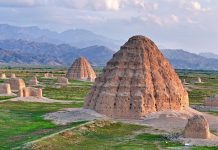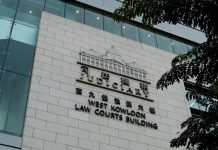URUMQI: President Xi Jinping’s visit to the Xinjiang Uygur Autonomous Region Museum on July 13 has inspired workers at the museum to carry out innovations to ensure that the institution can better tell stories about the region.
The museum, which was established in 1959, has collected around 25,000 sets of historical documents and cultural relics, and plays an active role in strengthening ethnic unity, fostering patriotism and passing on the fine traditions of Chinese civilization.
An ongoing exhibition at the museum chronicles the history of Xinjiang from the Paleolithic period-also called the Old Stone Age-to the Qing Dynasty (1644-1911), and displays more than 1,500 sets of cultural relics, among which 500 are making their debut to the public.
Among the exhibits are letters from the Tang Dynasty (618-907), which had been unearthed at the Kiyakkuduk beacon tower site in Yuli county in Xinjiang. In March, the site was listed among the country’s top 10 new archaeological discoveries of 2021.
In addition, brocade discovered in the ruins of Niya in Xinjiang, on which there are eight Chinese characters that translate as “five stars rise in the East, benefiting China”, is also displayed. It is thought to date from the Han Dynasty (206 BC-AD 220) and is widely regarded as a national treasure and a testament to the communication between different ethnic groups in ancient China.
“These relics provide strong evidence that the central authorities exercised administration over Xinjiang throughout the ages,” said Yu Zhiyong, the museum’s curator. During Xi’s visit to the museum, he noted that Chinese civilization, consisting of the fine cultures created by different ethnic groups, is extensive and profound, and has a long history stretching back to antiquity.
–The Daily Mail-China Daily news exchange item





